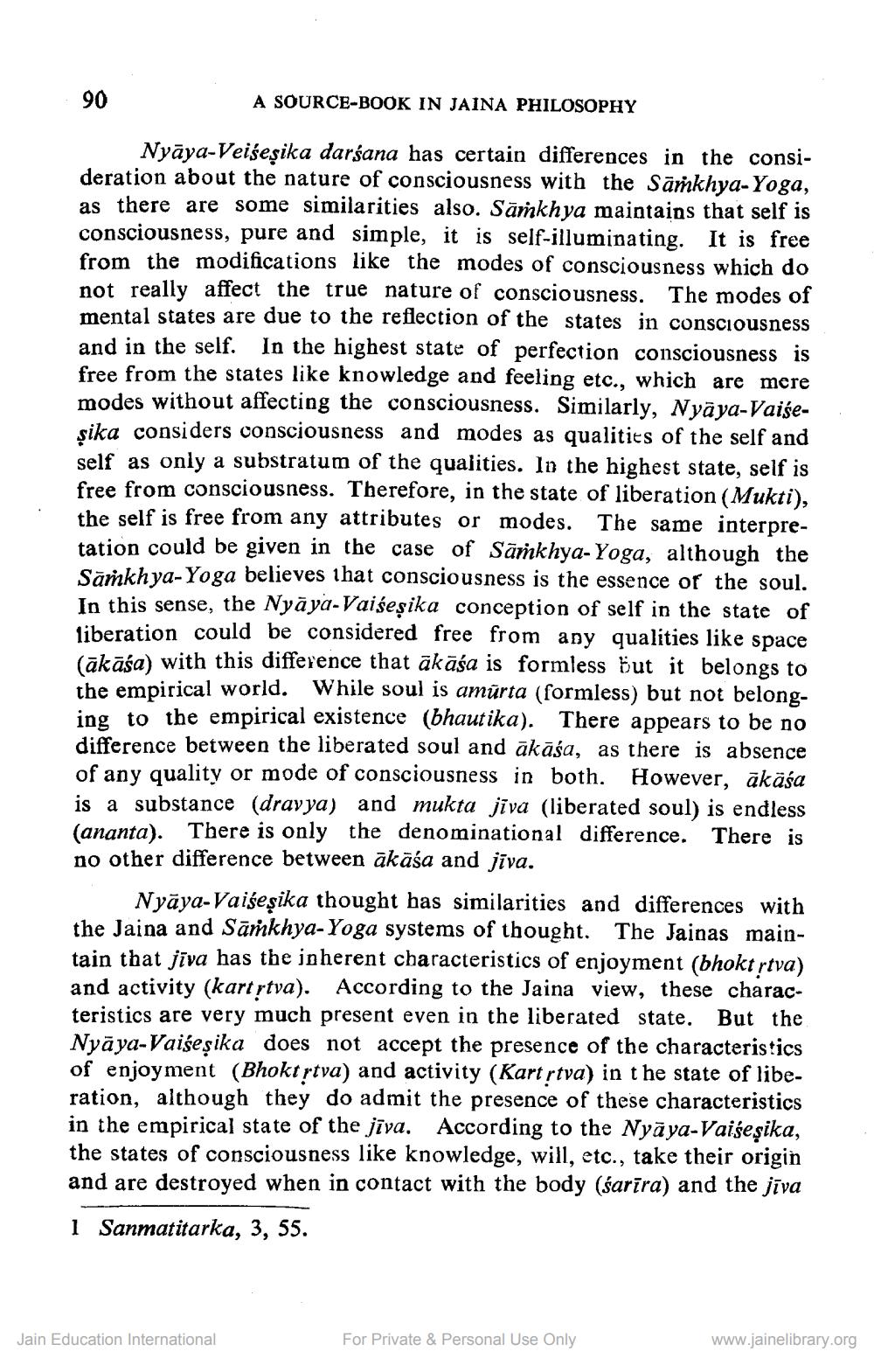________________
A SOURCE-BOOK IN JAINA PHILOSOPHY
Nyāya-Veisesika darśana has certain differences in the consideration about the nature of consciousness with the Sāṁkhya-Yoga, as there are some similarities also. Sāmkhya maintains that self is consciousness, pure and simple, it is self-illuminating. It is free from the modifications like the modes of consciousness which do not really affect the true nature of consciousness. The modes of mental states are due to the reflection of the states in consciousness and in the self. In the highest state of perfection consciousness is free from the states like knowledge and feeling etc., which are mere modes without affecting the consciousness. Similarly, Nyāya-Vaisesika considers consciousness and modes as qualities of the self and self as only a substratum of the qualities. In the highest state, self is free from consciousness. Therefore, in the state of liberation (Mukti), the self is free from any attributes or modes. The same interpretation could be given in the case of Sāṁkhya-Yoga, although the Sārnkhya-Yoga believes that consciousness is the essence of the soul. In this sense, the Nyāya-Vaišesika conception of self in the state of liberation could be considered free from any qualities like space (ākāśa) with this difference that ākāśa is formless but it belongs to the empirical world. While soul is amūrta (formless) but not belonging to the empirical existence (bhautika). There appears to be no difference between the liberated soul and ākāśa, as there is absence of any quality or mode of consciousness in both. However, akāśa is a substance (dravya) and mukta jiva (liberated soul) is endless (ananta). There is only the denominational difference. There is no other difference between ākāśa and jīva.
Nyāya-Vaiseșika thought has similarities and differences with the Jaina and Sankhya-Yoga systems of thought. The Jainas maintain that jīva has the inherent characteristics of enjoyment (bhokt stva) and activity (kart rtva). According to the Jaina view, these characteristics are very much present even in the liberated state. But the Nyāya-Vaiseșika does not accept the presence of the characteristics of enjoyment (Bhokt rtva) and activity (Kart rtva) in the state of liberation, although they do admit the presence of these characteristics in the empirical state of the jīva. According to the Nyāya-Vaiseșika, the states of consciousness like knowledge, will, etc., take their origin and are destroyed when in contact with the body (śarīra) and the jīva 1 Sanmatitarka, 3, 55.
Jain Education International
For Private & Personal Use Only
www.jainelibrary.org




